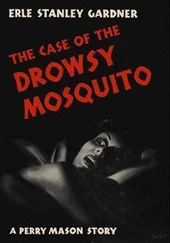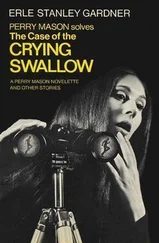Daniel Gardner - The Science of Fear
Здесь есть возможность читать онлайн «Daniel Gardner - The Science of Fear» весь текст электронной книги совершенно бесплатно (целиком полную версию без сокращений). В некоторых случаях можно слушать аудио, скачать через торрент в формате fb2 и присутствует краткое содержание. ISBN: , Издательство: Penguin Group (USA) Incorporated, Жанр: Психология, Политика, Прочая научная литература, на английском языке. Описание произведения, (предисловие) а так же отзывы посетителей доступны на портале библиотеки ЛибКат.
- Название:The Science of Fear
- Автор:
- Издательство:Penguin Group (USA) Incorporated
- Жанр:
- Год:неизвестен
- ISBN:9780525950622
- Рейтинг книги:3 / 5. Голосов: 1
-
Избранное:Добавить в избранное
- Отзывы:
-
Ваша оценка:
- 60
- 1
- 2
- 3
- 4
- 5
The Science of Fear: краткое содержание, описание и аннотация
Предлагаем к чтению аннотацию, описание, краткое содержание или предисловие (зависит от того, что написал сам автор книги «The Science of Fear»). Если вы не нашли необходимую информацию о книге — напишите в комментариях, мы постараемся отыскать её.
The Science of Fear — читать онлайн бесплатно полную книгу (весь текст) целиком
Ниже представлен текст книги, разбитый по страницам. Система сохранения места последней прочитанной страницы, позволяет с удобством читать онлайн бесплатно книгу «The Science of Fear», без необходимости каждый раз заново искать на чём Вы остановились. Поставьте закладку, и сможете в любой момент перейти на страницу, на которой закончили чтение.
Интервал:
Закладка:
Notes
As a journalist writing for a daily newspaper, I usually provide enough information in the text to allow readers to find my original sources with a quick Google search of names or keywords. In this book, I’ve generally followed the same approach. These notes are limited to the occasional instances where more information is necessary to find sources, and to provide additional commentary.
CHAPTER ONE
9: “The trends in humanity’s political arrangements are also quite positive. . . .” See Adrian Karatnycky, The 1999 Freedom House Survey: A Century of Progress, Journal of Democracy, January 2000. Note that in 1900 not one country anywhere in the world qualified as a full democracy according to modern standards of universal suffrage.
9: “A major study released later that year by the Human Security Centre at the University of British Columbia. . . .” See Human Security Report 2005: War and Peace in the 21st Century , Human Security Centre, Oxford University Press, New York, 2005.
10: “In Europe, where there are more cell phones than people and sales keep climbing, a survey found. . . .” See Eurobarometer/nVision, 2006.
CHAPTER TWO
22: There is only the brain.
25: “Psychologists found that when they asked students to eat a piece of fudge. . . .” Like many of the references to the work of psychologists in this chapter and others that follow, this is drawn from Heuristics and Biases , edited by Thomas Gilovich, Dale Griffin, and Daniel Kahneman. Along with the earlier edition of the same work—edited by Paul Slovic, Amos Tversky, and Daniel Kahneman—it is the definitive text on the subject.
30: “. . . if you give it some careful thought . . . .” The answer is five cents.
CHAPTER THREE
35: “Those who heard the higher number, guessed higher.” For the record, both groups were way off. Gandhi was 79 when he died.
38: “. . . produced an average answer almost 150 percent greater than a low number.” Psychologists Baruch Fischhoff, Sarah Lichtenstein, and Paul Slovic found another use for anchoring numbers in a study that asked people to estimate the toll taken by various causes of death. Without guidance, people’s answers were often wildly inaccurate, ranging from one extreme to the other. But when the researchers told people that 50,000 Americans are killed in car crashes each year (a toll which has dropped since the study was conducted), their answers “stabilized dramatically” because they started at 50,000 and adjusted up or down. In later trials, the researchers switched the anchoring number to 1,000 dead from electrocution—with the predictable result that people’s estimates of deaths by other causes dropped enormously.
43: “. . . as even many black men do.” For an explanation and tests of unconscious beliefs which anyone can take, see “Project Implicit” at www. implicit.harvard.edu.
52: “There is no ‘just’ in imagining.” Lottery and casino ads that highlight smiling winners are another form of powerful manipulation. The odds of winning big jackpots are so tiny that almost no one will be able think of winners in their personal lives. But by advertising examples of people who struck it big—often with personal details that make their stories memorable—lotteries and casinos make it easy for people to recall examplesof winners. And that ease of recall boosts Gut’s estimate of the likelihood of winning.
57: “. . . only family and friends will hear of a life lost to diabetes.” Much of the work of Paul Slovic cited in this book can be found in The Perception of Risk , a compilation of decades of Slovic’s papers.
CHAPTER FOUR
59: “. . . a conference that brought together some of the world’s leading astronomers and geoscientists to discuss asteroid impacts.” The conference papers were compiled in P. Bobrowsky and H. Rickman (eds.), Comet/Asteroid Impacts and Human Society .
73: “. . . while ‘all possible causes’ is bland and empty. It leaves Gut cold.” See Eric Johnson et al., Framing, Probability Distortions, and Insurance Decisions, Journal of Risk and Uncertainty 7(1): 35-51.
74: “. . . raising risk estimates by 144 percent.” See Affect Generalization and the Perception of Risk, Journal of Personality and Social Psychology 45: 20-31.
75: “Beloved grandfathers are not necessary.” One of the stranger demonstrations of the mere exposure effect involves asking people to choose which of two images they prefer. One is a photograph of their face the way it actually is. The other is the same image reversed. Most people choose the face that is reversed. Why? Because that’s what they see every morning in the mirror.
76: “. . . the Penguins’ penalty time rose 50 percent to 12 minutes a game.” Does the black uniform mean referees perceive the team more negatively and therefore judge them more strictly than they otherwise would? Or does the black uniform inspire players to be more aggressive? Both, the researchers concluded. See M. G. Frank and T. Gilovich, The Dark Side of Social and Self-Perception: Black Uniforms and Aggression in Professional Sport, Journal of Personality and Social Psychology 54:11, 74-85.
79: “. . . bias in favor of the ‘lean’ beef declined but was still evident.” Irwin Levin and Gary Gaeth, How Consumers Are Affected by the Framing of Attribute Information Before and After Consuming the Product, The Journal of Consumer Research, December 1988.
80: “Feeling trumped numbers. It usually does.” See Cass Sunstein’s Laws of Fear .
82: “. . . a good chance I won’t even think about that.” See Robin Hogarth and Howard Kunreuther, Decision Making Under Ignorance, Journal of Risk and Uncertainty, 1995.
CHAPTER FIVE
91: “. . . in a way that the phrase ‘almost 3,000 were killed’ never can.” This summary of the life of Diana O’Connor comes from the remarkable obituaries the New York Times prepared of every person who died in the attack. The series ran for months and garnered a huge readership.
93: “Only data—properly collected and analyzed—can do that.” The reader will notice that anecdotes abound within this book. My point here is not to dismiss stories, only to note that, however valuable they may be in many circumstances, anecdotes have serious limitations.
94: " ’... the deaths of millions is a statistic,’ ” said that expert on death, Joseph Stalin.” Psychologists call this the “identifiable victim effect.” For a discussion, see, for example, George Loewenstein, Deborah Small, and Jeff Strnad, Statistical, Identifiable and Iconic Victims and Perpetrators, Stanford Law and Economics Olin Working Paper No. 301, March 2005.
94: “. . . empathetic urge to help generated by the profile of the little girl.” Even in relatively unemotional situations—the sort in which we may assume that calm calculation would dominate—numbers have little sway. Psychologists Eugene Borgida and Richard Nisbett set up an experiment in which groups of students at the University of Michigan were asked to look at a list of courses and circle those they thought they might like to take in future. One group did this with no further information. A second group listened to brief comments about the courses delivered in person by students who had taken the courses previously. These presentations had a “substantial impact” on students’ choices, the researchers found. Finally, a third group was given the average rating earned by each course in a survey of students who had taken the courses previously: In sharp contrast with the personal anecdotes, the data had no influence at all.
Читать дальшеИнтервал:
Закладка:
Похожие книги на «The Science of Fear»
Представляем Вашему вниманию похожие книги на «The Science of Fear» списком для выбора. Мы отобрали схожую по названию и смыслу литературу в надежде предоставить читателям больше вариантов отыскать новые, интересные, ещё непрочитанные произведения.
Обсуждение, отзывы о книге «The Science of Fear» и просто собственные мнения читателей. Оставьте ваши комментарии, напишите, что Вы думаете о произведении, его смысле или главных героях. Укажите что конкретно понравилось, а что нет, и почему Вы так считаете.












